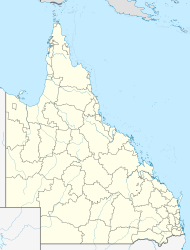물병자리 4
4 Aquarii| 관측 데이터 에폭 J2000 이쿼녹스 J2000 | |
|---|---|
| 별자리 | 물병자리 |
| 우측 상승 | 20h 51m 25.74827s[1] |
| 탈위임 | −05° 37′ 35.8719″[1] |
| 겉보기 크기(V) | 5.99[2] (6.40 + 7.43)[3] |
| 특성. | |
| 스펙트럼형 | F7 IV + F6: V:[4] |
| B-V색지수 | 0.464±0.003[2] |
| 아스트로메트리 | |
| 방사 속도(Rv) | -21.50km[5]/s |
| 적정운동(μ) | RA: 95.47마스[1]/yr Dec.: 1.78[1]mas/yr |
| 시차(시차) | 16.47 ± 0.59 마스[1] |
| 거리 | 198 ± 7 리 (61 ± 2 pc) |
| 절대치수(MV) | 2.15[6] |
| 궤도[7] | |
| 기간(P) | 200.7±1.1 yr |
| 반주축(a) | 0.816±0.006″ |
| 편심률(e) | 0.535+0.006 −0.005 |
| 기울기(i) | 64.06+0.26 −0.27° |
| 노드의 경도(Ω) | 174.31+0.38 −0.39° |
| 페리아스트론 에폭(T) | B 1,896.8+0.39 −0.40 |
| 페리아스트론 인수(Ω) (2차) | 45.9±1.2° |
| 세부사항[6] | |
| 4 Aqr A | |
| 미사 | 1.618±0.004[7] M☉ |
| 루미도 | 11.0 L☉ |
| 표면 중력(log g) | 3.79 cgs |
| 온도 | 6,440 K |
| 금속성 [Fe/H] | 0.18[8] 덱스 |
| 회전 속도(v sin i) | 34.6km/s |
| 나이 | 1.60[8] Gyr |
| 4 Aqr B | |
| 미사 | 1.331±0.003[7] M☉ |
| 기타 지정 | |
| 데이터베이스 참조 | |
| 심바드 | 4 Aqr |
| 4 Aqr A | |
| 4 Aqr B | |
물병자리 4(약칭 4Aqr)는 물병자리 별자리에 있는 2진법으로 [9]태양으로부터 약 198광년 떨어져 있다.[1] 물병자리 4는 플램스테드 명칭이다.그것은 육안으로 볼 때 겉보기 크기가 5.99인 희미한 황백색의 후아 항성으로 보인다.[2]이 시스템은 -21.5 km/s의 태양 중심 방사상 속도로 지구 가까이 이동하고 있다.[5]
이는 궤도 주기가 200.7년이고 이심률이 0.535인 시각적 이진법이다.[7]진도 6.40[3] 1차, 지정 성분 A는 F7 IV의 별 분류를 가진 F형 아거성 항성으로,[4] 중심부의 수소를 소진하고 주계열성으로부터 진화했음을 시사한다.[7]태양보다 1.6배 동적으로 측정된[7] 질량을 가지며 유효온도 6,440K로 광구에서 태양 광도의 11배를 방출하고 있다.[6]진도 7.43[3] 2차 성분 B는 등급 F6 V의 F형 주계열성으로 의심된다.[4]이 두 사람은 약 16억 살로 추정된다.[8]
참조
- ^ a b c d e f van Leeuwen, F. (2007). "Validation of the new Hipparcos reduction". Astronomy and Astrophysics. 474 (2): 653–664. arXiv:0708.1752. Bibcode:2007A&A...474..653V. doi:10.1051/0004-6361:20078357. S2CID 18759600.
- ^ a b c Anderson, E.; Francis, Ch. (2012). "XHIP: An extended hipparcos compilation". Astronomy Letters. 38 (5): 331. arXiv:1108.4971. Bibcode:2012AstL...38..331A. doi:10.1134/S1063773712050015. S2CID 119257644.
- ^ a b c Mason, B. D.; et al. (2014), The Washington Visual Double Star Catalog, Bibcode:2001AJ....122.3466M, doi:10.1086/323920
- ^ a b c Corbally, C. J.; Garrison, R. F. (August 1980). "New spectral classifications on the MK system for visual double stars". Publications of the Astronomical Society of the Pacific. 92: 493–496. Bibcode:1980PASP...92..493C. doi:10.1086/130700.
- ^ a b Gontcharov, G. A. (November 2006). "Pulkovo Compilation of Radial Velocities for 35 495 Hipparcos stars in a common system". Astronomy Letters. 32 (11): 759–771. arXiv:1606.08053. Bibcode:2006AstL...32..759G. doi:10.1134/S1063773706110065. S2CID 119231169.
- ^ a b c Luck, R. Earle (January 2017). "Abundances in the Local Region II: F, G, and K Dwarfs and Subgiants". The Astronomical Journal. 153 (1): 19. arXiv:1611.02897. Bibcode:2017AJ....153...21L. doi:10.3847/1538-3881/153/1/21. S2CID 119511744. 21.
- ^ a b c d e f Mendez, Rene A.; et al. (November 2017). "Orbits for 18 Visual Binaries and Two Double-line Spectroscopic Binaries Observed with HRCAM on the CTIO SOAR 4 m Telescope, Using a New Bayesian Orbit Code Based on Markov Chain Monte Carlo". The Astronomical Journal. 154 (5): 22. arXiv:1709.06582. Bibcode:2017AJ....154..187M. doi:10.3847/1538-3881/aa8d6f. S2CID 55695873. 187.
- ^ a b c Casagrande, L.; et al. (June 2011). "New constraints on the chemical evolution of the solar neighbourhood and Galactic disc(s). Improved astrophysical parameters for the Geneva-Copenhagen Survey". Astronomy and Astrophysics. 530: A138. arXiv:1103.4651. Bibcode:2011A&A...530A.138C. doi:10.1051/0004-6361/201016276. S2CID 56118016.
- ^ a b "* 4 Aqr". SIMBAD. Centre de données astronomiques de Strasbourg. Retrieved 23 October 2014.


